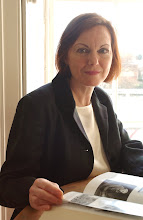 Meanwhile next door at No. 42, another doctor had also been making headlines. Augustus Novelli may have left the medical world once he had gained a fortune, but Henry Shuckburgh Roots found fame within his profession as a pioneering advocate of plastic surgery. In the course of his work at St. Pancras Infirmary, Roots came across a hideously deformed shoemaker, whose nose had been eaten away by the mercury treatment then used as a “cure” for syphilis. Despite the fact that anaesthetics had not yet been invented, the patient was given a skin graft by a local doctor, and survived.
Meanwhile next door at No. 42, another doctor had also been making headlines. Augustus Novelli may have left the medical world once he had gained a fortune, but Henry Shuckburgh Roots found fame within his profession as a pioneering advocate of plastic surgery. In the course of his work at St. Pancras Infirmary, Roots came across a hideously deformed shoemaker, whose nose had been eaten away by the mercury treatment then used as a “cure” for syphilis. Despite the fact that anaesthetics had not yet been invented, the patient was given a skin graft by a local doctor, and survived.Henry Roots occupied No. 42 in the 1830s, before Augustus Novelli lived next door, so the two doctors never actually met coming down the front steps. Novelli’s neighbour at No. 42, who lived there after Roots, was Sir Chapman Marshall, a Lord Mayor of London no less.
Born in 1786, Sir Chapman was a London grocer who had been knighted in 1831 while serving as Sheriff of London for giving a particularly fulsome and loyal address to the King. He capped this in 1839-40 by serving as Lord Mayor of London.
The 1851 census shows Marshall living at No. 42, a 67-year old widower, being looked after by a housekeeper, cook, housemaid and coachman.
And so for the next half-century, there was a succession of wealthy residents of 42 and 43 Russell Square. At No. 42 the Astons, attorneys and stockbrokers, lived quietly between about 1860-1880, followed by the Mattons. Edward Matton, head of the household, was a Dutch coal merchant. At about this time the house seems to have been subdivided, as Alfred Kendrick, a renowned actor of the late Victorian and Edwardian age, was also recorded living there. The photo above shows Alfred Kendrick (far right) in 'The Scarlet Pimpernel', which opened at London's New Theatre in January 1905.
Next door in the 1870s lived John (later Sir John) Monckton, Town Clerk of the City of London, followed in the 1880s by Richard Poppleton, a well-to-do Yorkshire leather merchant.
There were significant changes to Russell Square in the 1890s. Decorative terracotta work was addded to the houses on the north and south sides; this still survives on the south side. And in 1895 the Trustees received a loan of £200,000 from Parliament so that they could purchase outright all the perimeter properties surrounding the Museum, including 42-43 Russell Square. As long ago as 1851, the architect of the British Museum Sydney Smirke had proposed acquiring the Montague Street and Russell Square properties for additional library space, but the cost then was too high.
Architect Sir John Burnet was commissioned to expand the Museum galleries out to the new perimeter. Under this scheme, the houses of Montague Street and Rusell Square, Bedford Square and Montague Place were to be demolished and replaced with vast colonnades leading to new galleries. Only the Montague Place element of the scheme was completed, built 1906-14 and now of course known as the King Edward Building.
